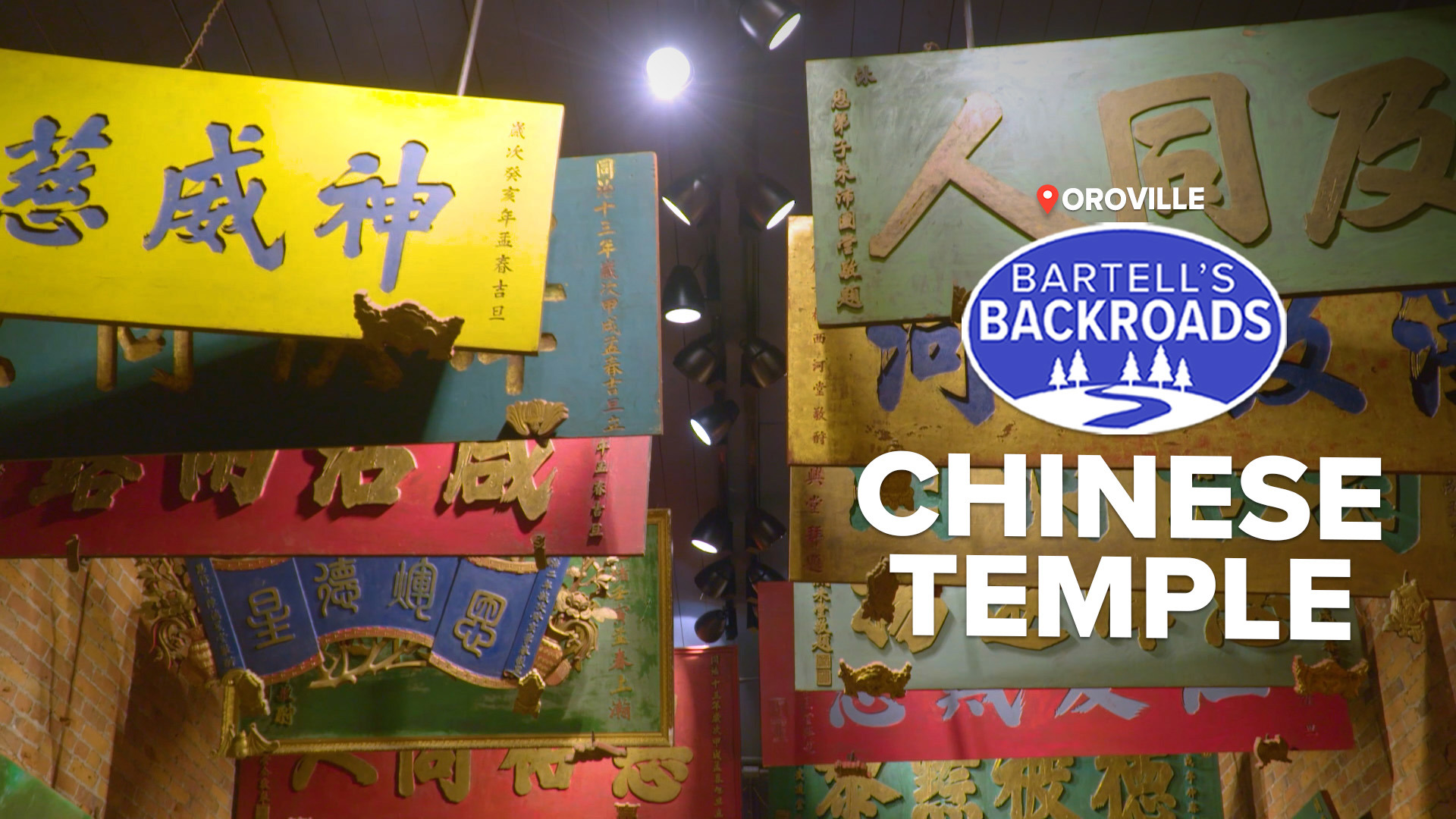OROVILLE, Calif. — The chime of a metallic gong was a familiar sound along the Feather River and in Butte County’s Chinatown during the gold rush. If you were near Oroville, the soothing tones likely came from the Chinese Temple.
“Anybody can come in here. It is the temple of many gods and goddesses. There is a Buddhist influence, a Confucian influence, but it was basically a Daoist temple,” said tour guide Gaylord Grams.
The front entrance to Oroville’s Chinese Temple was built with two doors. The second door has a threshold to keep evil spirits out.
“The reason for the threshold is that you have to lift your feet up to enter the temple. Evil spirits have no knees so they can’t come into the temple,” said Grams.
As you cross the threshold into the temple, Grams will point out the prayer boards hanging overhead.
“One of special interest is this blue one over our head which is dated 1863, which makes it the second-oldest Chinese artifact in the state,” said Grams.
1863 is when the original Chinese temple was built in Oroville. After a fire, the temple was rebuilt with brick to serve the booming number of Chinese immigrants looking for newly discovered gold in the Feather River.
“For four years they pulled out over $1 million of gold a year in the 1870s,” Grams said.
TAKE A TRIP ON BARTELL'S BACKROADS:
► See an interactive map of everywhere John has visited on the backroads
► Watch all of the Backroads videos
► Follow John on Facebook
Mining was tough for the Chinese. They fought discrimination and their gold profits were heavily taxed.
“It was a large amount of money the government extracted from them to allow them to come here,” said Grams.
Despite the discrimination and taxation, the Chinese built seven different buildings on the temple grounds which served different religions. They also housed priceless artifacts brought over from China, like the enormous cast iron incense burner sitting out front.
“It’s quite special; it is the only one of its kind in North America,” Grams said.
The fact these artifacts are still around is quite amazing. A 1907 flood wiped out much of Chinatown.
“There was five feet of water and silt in here leaving this building unusable,” Grams said.
The Chinese miners were able to remove and preserve many of the items in the temple, but the buildings remained empty until the 1940s when descendants of the miners talked the city of Oroville into turning the temple into a museum.
“The Chan family continued to pay the taxes on this building so it was not repossessed by the city," said Grams.
Today, the temple serves as a reminder of the hard work and hardship early Chinese immigrants experienced during the gold rush.
Visit the City of Oroville website for hours and to book a tour.
GRAB A BITE TO EAT ON THE BACKROADS: How a law professor discovered the oldest Chinese restaurant in America.



















